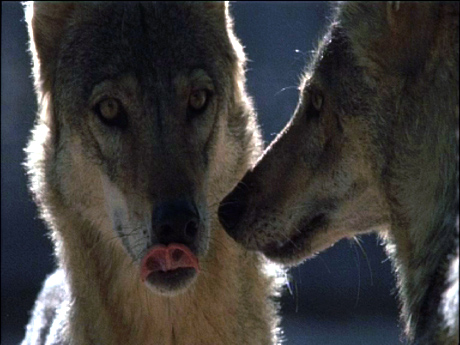

Our Programmes |
Desert Wolves of India Discover the true origins of the Indian wolf
This is a personal story told by Yadrendradev Jhala – a man passionate about wolves. The film tells the complex and intimate story of the Indian wolf and how it survives amidst a dense population of desert people and their livestock. It illustrates the importance of an age-old culture that ironically helps preserve the wildlife around it – even the wolves.
Producers comments Background To reveal the truth, Mike sought the expertise of Dr Yadvendradev Jhala, a scientist from the Wildlife Institute of India. He had been studying Indian wolves for 15 years. First they discussed the man-eaters and any previous films on these wolves. Jhala assured Mike these cases were indeed overstated and sensationalised – man-eating was extremely rare and many of the reported incidents were probably not connected with wolves at all. Yes, there had been a few tragic incidents but man-eating wolves were not for Mike. Jhala had been working to reveal the true nature of the Indian wolf. Mike decided he wanted to make a film that would help redress the balance and paint a true picture of the biology and social behaviour of the Desert Wolves of India. Mike always appreciated Rudyard Kipling for portraying Akela the wolf and his pack in Jungle Book as the good guys. Mike had to find an exceptional photographer to work with - he knew who he wanted. Mark Smith is an Emmy Award winning photographer (for 'Flying Devils' - about the striated caracara of the Falklands). He and Mike had worked together before on 'Land of the Tiger' and on a film about the Asian Elephant ('The Last Tusker'). In fact Mike had first heard about Mark after he made a beautiful film in Western India close to where Jhala’s wolves were. Mark was the first choice and the ideal man for the job. The film looks stunning – unique desert wolves, desert landscapes and colourful Rabari people; timelapse and night photography provide novelty. This film is put together with a sense of energy and vibrancy and beautifully edited by Andy Netley. It is enhanced by outstanding music from the award winning composer David Mitcham and performed by The Royal Philharmonic Orchestra, Pete Lockett (percussion) and Mark Johns (guitar). The location Desert Wolves of India An intimate story of the Indian wolf and how it survives amidst a dense population of desert people and their livestock. It illustrates the importance of an age-old culture which helps preserve the wildlife around it – even the wolves.
Producer: Mike Birkhead Photography: Mark Smith Editor: Andy Netley Music: David Mitcham Dubbing Editor: Paul Clarke Series Editor: Tim Martin |

